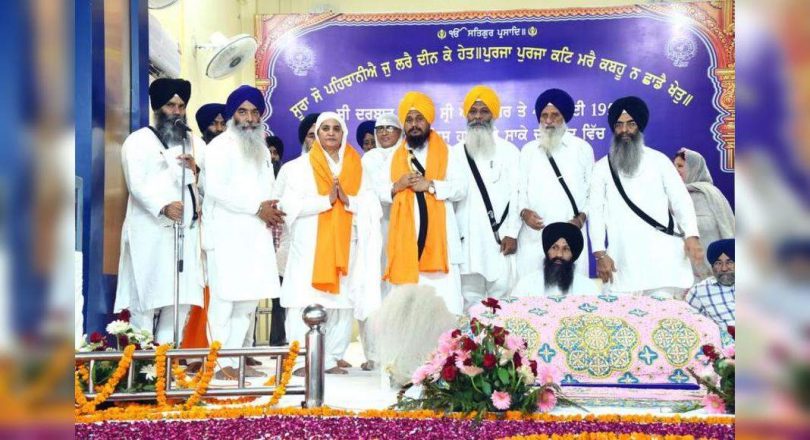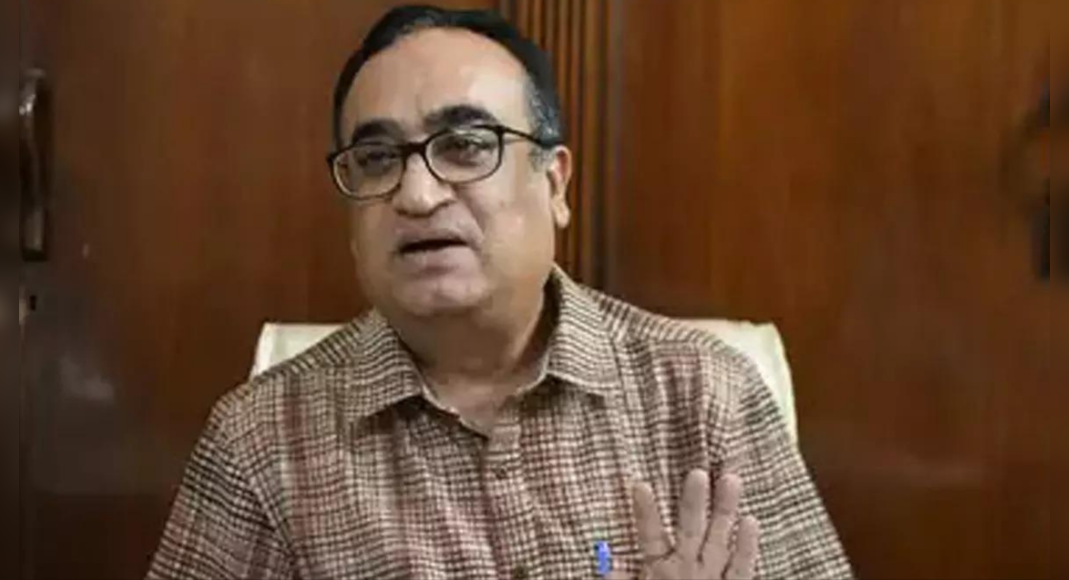Jalandhar: With the state assembly elections now only months away, all political parties are opening promising prominence to communities and castes.
With Jat Sikhs already assured dominance in state politics, BJP is pledging power to Dalits, which SAD is countering with Hindu and Dalit deputy chief ministers.
Even with internal strife bubbling over, the Congress too is trying to strike communal balance.
While parties talk like they are inventing social engineering in Punjab, the fact remains that these safety valves already exist.
For example, heads of two most important and highest Sikh institutions come from so called lower castes.
Giani Harpreet Singh, acting Jathedar of Akal Takht, the highest temporal seat of Sikhs, comes from scheduled caste (SC) background.
Similarly, Shiromani Gurdwara Parbandhak Committee president Bibi Jagir Kaur comes from backward class (BC) background.
Though political discourse has been creating a perception that Dalits and Sikhs are two completely different entities, data analysis and observations show that not only SCs make one third of total Sikh population in Punjab but also numerous fellows from so called ‘lower caste’ backgrounds have been working as granthis (scripture readers), ragis (hymns singers), preachers and dhadis (ballad singers).
Some of them have reached the top also, in terms of holding offices, as well as, enjoying popularity and respect.
It needed a lot of inquiries to confirm caste background of Jathedar Ginai Harpreet Singh as usual reply in SGPC circles and even from those close to him in religious or community affairs was — nobody has ever discussed or bothered.
When asked about his caste background, his journey in Sikh religious affairs and elevation to the top post, Giani Harpreet quipped, “It has never mattered to me or those around me.
Throughout my only identity have been of a Sikh and only my dedication to Guru’s philosophy and cause has mattered.” His father was also a granthi.
“I topped the three-year course from Guru Kashi Gurmat Institute, Talwandi Sabo, in 1997.
SGPC officials themselves called me for appointment as parcharak (preacher).
I was later appointed head granthi and ‘katha vachak’ two years later and was then appointed Takht Damdama Sahib jathedar in May 2017,” he said.
“I have always been saying that Sikh religion provides equal recognition for all,” he added.
He appointed Akal Takht acting Jathedar in October 2018.
Bibi Jagir Kaur’s caste — Lubana, classified as BC — is widely known as she rose through political field after first becoming MLA in 1997.
She also has the distinction of becoming first woman president of SGPC.
When asked, she said during her unbroken stint in the Sikh representative body for the last 25 years, she never saw any consideration about caste backgrounds of granthis, ragis, preachers or other employees.
“There can be several in the past and currently serving who might be coming from so called lower caste or SC backgrounds.
People here really don’t bother or question caste backgrounds of granthis, hazoori ragis at Darbar Sahib or at other historic gurdwaras,” she said.
Darbar Sahib is central shrine of Sikhs.
Former SGPC secretary Kulwant Singh Randhawa, who served the representative body for over 43 years after joining it in 1956, also shared the same observations.
Other prominent examples Former Akal Takht Jathedar Bhai Ranjit Singh came from Ramgarhia background, notified as BC in Punjab.
Late Giani Bhagwan Singh, who remained head granthi of Akal Takht also came from so called lower caste background.
Former SGPC president Prof Kirpal Singh Badungar also came from BC background.
Darbar Sahib hazoori ragi and Padma Shri awardee, Bhai Nirmal Singh, whose death due to Covid last year left the community grieving across the globe, was also from Mazhabi Sikh background.
He was trained at SGPC-run Missionary College in Amritsar.
Scores of granthis, ragis are from SC, BC Saroop Singh Kadiana, who has been heading a ‘dhadi jatha’ for the last 31 years and also contested as AAP candidate from Phillaur reserve seat in 2017, said that neither before contesting election nor after, when it was known that he was from SC background, he faced any issues.
“In fact, several granthis, ragis, dhadis and preachers are from so called lower castes and they serve in different gurdwaras in towns and villages.
From my anecdotal knowledge, I can tell that it is possible that rather most of them would be from SC or BC backgrounds,” he said.
Responding to a query, he revealed that a member of his group was Ramdasia Sikhs (SC) and two were Jat Sikhs.
“Most of the dhadi and ragi jathas would be of people from different caste backgrounds,” said Kadiana, who comes from Ramdasia Sikh community.
Manjit Singh Raj, Ludhiana-based ragi who comes from Mazhabi Sikh community, said to be lowest at the caste ladder, says that even his own jatha (group) is a mix.
“I have been into Gurbani singing for the last seven years and have never faced any caste issues, though I have been to different gurdwaras across Punjab and outside.
People don’t bother in the first place, and even if they know it has never been an issue,” he said.
Why SCs among Sikhs ? “In Sikhism there is no place of caste stratification.
Sikh leader Master Tara Singh got certain castes among Sikhs included in the scheduled caste list with a lot of efforts as those who had joined the Sikh fold from ‘lower castes’ were still largely economically deprived and deserved benefit of reservation for economic upliftment.
Granthis and ragis coming from SC backgrounds is the biggest recognition not only of their religious and social emancipation but also of complete reversal of caste-disabilities,” says former IAS officer and noted Sikh author Gurtej Singh.
How Sikh SCs got reservation “Sikhs coming from ‘lower caste’ backgrounds were refused reservation originally in the Constitution even as Sikh representatives of Akali Dal in the Constituent Assembly had pressed for it.
Home minister Sardar Patel strongly opposed it in the CA.
After making other efforts, Master Tara Singh wrote to the President of India on April 4, 1953 on the issue.
Finally, he threatened agitation at Delhi and left with a jatha from Anandpur Sahib on October 1, 1953.
He and other Sikh activists were on the way when Prime Minister J L Nehru intervened and four castes – Mazhabis, Ramdasias, Kabir Panthis (Julahas) and Sikligars — were included in the SC list for reservation,” says Tarlochan Singh, former Rajya Sabha member and ex-chairman of National Commission for Minorities.
Mazhabi Sikh make largest component Mazhabi Sikhs come from “lowest step of caste ladder”.
They share their caste background with ‘ati-shudra’ Balmikis.
They make biggest component of SC Sikhs and also among all the SCs with 25.62 lakh headcount in the 2011 Census.
In addition 2.07 lakh (24%) among those who mentioned their caste as Balmiki/Bhangi also identified themselves as Sikhs.
Population pie 2011 Total population of Punjab | 2.77 crore Total SC population | 88.60 lakh (31.9%) SC Sikhs | 53.90 lakh (19.4%) SC Hindus | 34.42 lakh (12.4%) SC Buddhists | 27,390 Total Sikh population | 1.60 crore (57.69%) Total Hindu population | 1.06 crore (38.49%) Major SC communities in Punjab and their religious identities (in lakhs) except Buddhists in Census 2011 Total Sikhs Hindus Buddhists Mazhabi/Mazhabi Sikh 26.33 25.62 0.71 160 Balmiki/Bhangi 8.66 2.07 6.57 1,588 Ad-dharmi 10.17 0.86 9.12 18,778 Ramdasia/Ravidsaia 20.78 6.29 14.43 5,896







